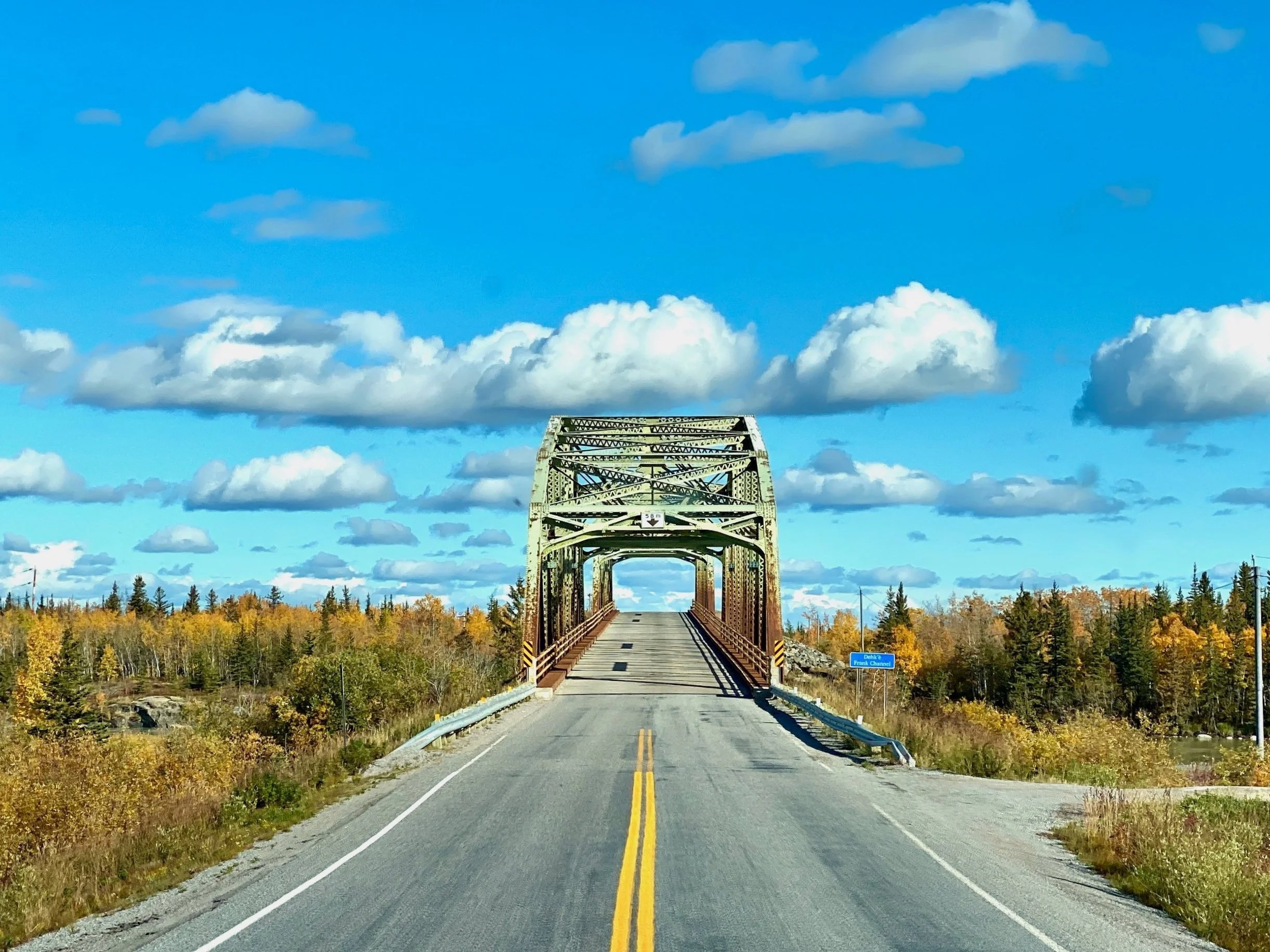Autumn Splendor And The 60th Parallel
Hay River to Yellowknife
After making it out of the park and back to Fort Smith, we continued on our way to Hay River and arrived in the early afternoon. There we took on some fuel and then started the long drive up to Yellowknife at around 3:45pm. It’s a drive you can do in one day in a vehicle that can travel at full highway speeds, but once again our tortoise pace meant we’d do it over a two day drive.
Our route was a circuitous one, but aside from taking an airplane, it’s the only way to get there. We didn’t drive for long before we started looking for a camp spot. By 5pm we found another disused gravel pit just off the side of the highway and set up for the night. The spot was near a small body of water called Heart Lake, appropriately named because of its shape.
After a peaceful night we got underway the next morning hoping to see some of the natural wonders that are written about in the tourist literature. The first of which was about an hours drive down the main highway. Unfortunately, it was not unexpected to see our hopes dashed.
Two of the best natural features were large waterfalls, around which Territorial Parks had been established. But because of the seasonal park closures throughout NWT, we couldn’t see any of them. What added insult to injury was that none of them had closed signs on the main highway billboards. So we had to drive up the side roads toward the falls, some as much as eight kilometres before we got to a locked gate. It was disappointing to be sure, but moreover, it was inconsiderate and even disrespectful to the visitors by the NWT Parks and Tourism ministries.
We had a well paved road most of the way to Yellowknife, but there were some rough sections that really needed repaving.
A half hour further down the road found us at the junction where we could either drive straight through and head west over to British Columbia, or turn right and head to Fort Providence, several First Nation communities and eventually, at the end of the road, Yellowknife. We made the turn and carried on to see Fort Providence before heading to Yellowknife.
Fort Providence, on The MacKenzie Headwater
Is it coincidental that the first thing you see in a town founded by missionaries is the church?
Located on the bank of the MacKenzie River, very near the source where the river forms from Great Slave Lake, Fort Providence is a small town of a little over 600 people. Founded in 1860 by missionaries it became a more formal town when the Hudson Bay Company moved its nearby trading post into the town with the mission. Most of the inhabitants are indigenous.
The Long Drive To Yellowknife
The newly visible rock alongside the desolate highway. If you want peaceful driving, come to the far north.
Once back on the road for a while we started to see small changes to the topography, with more rock present alongside the road. Up to now, visible rock has been scarce, aside from that which we saw at the river falls.
The settlements were spread quite a distance apart, and there was nothing between them except the wilderness and the odd band of munching bison alongside the road. We passed other vehicles only on an occasional basis, and most of them were either freight semi-trucks or heavy work vehicles.
On the way to Yellowknife, high up on the north arm of Great Slave Lake, we passed the native settlements of Edzo and Behchoko. We didn’t bother to stop, as we wanted to get to Yellowknife early enough to scope it out.
Yellowknife, Capital of the Northwest Territories
The welcome sign seemed to be at odds with how we felt we were greeted.
Sporting a population of roughly 20,000 ethnically diverse individuals, Yellowknife is the only city in the Northwest Territories. Located on the north side of Great Slave Lake, it was founded in 1934 after gold was discovered in the area. The city was designated the capital of NWT in 1967 and gold mining began to wane. The city then shifted its focus to more bureaucratic purposes, but in the early 1990s diamond exploration and mining was established and the city started to revert back to its resource centric purpose.
We rolled into town in the late afternoon and headed to the visitors centre for some help finding a place to park up, and advice on what things to look at. However the visitor centre had just recently moved from the city hall to a shopping mall nearby, and when we finally found it and went in, the staff were basically useless. They had no literature to give us, didn’t know of any parks open and couldn’t offer any suggestions of private camping in the city we could try. They offered their only suggestion which was a parking lot at a nearby marina, but it was already full of boat trailers and the odd RV. So we had to move on. After driving around the town for an hour, with little seen to convince us to stay longer, we filled up with fuel, pointed the truck west and blew town with a rather dejected feeling.


























































































